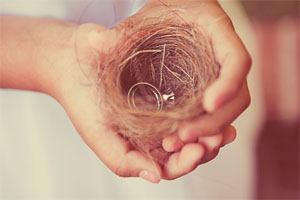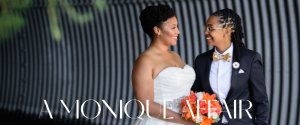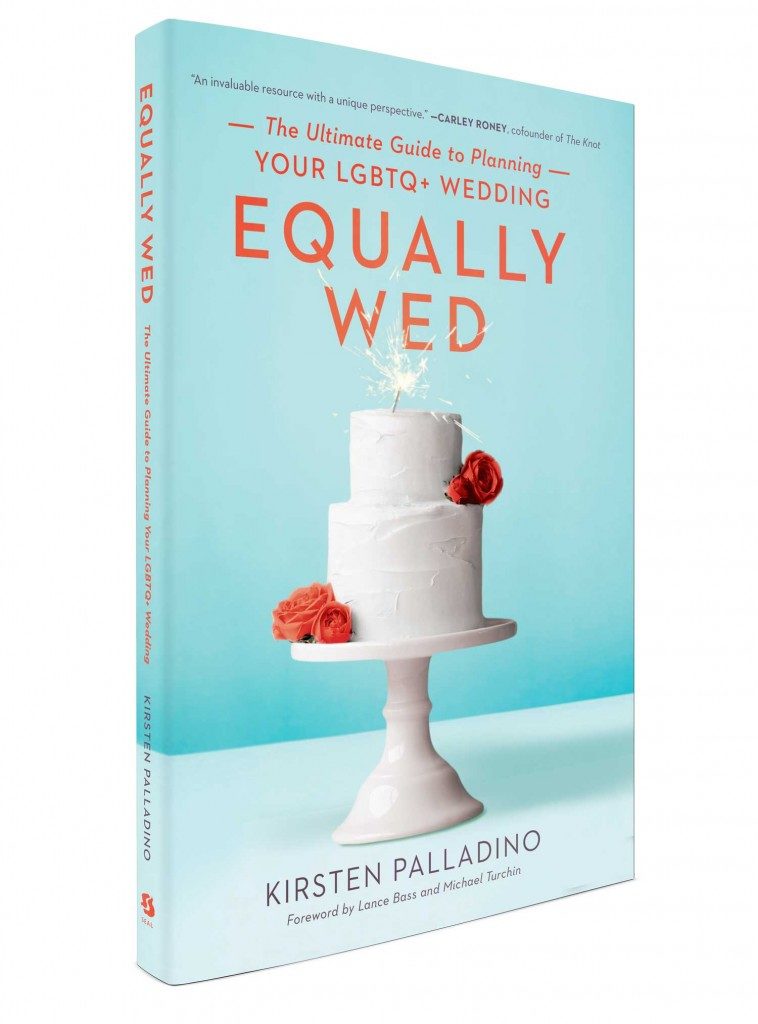Creative Ceremonies
Inspired ideas for personalizing your wedding
By Katherine Dean and Kirsten Palladino
We’ve gathered traditions, new and old, to consider incorporating into your ceremony.
ENTERING
Traditional straight weddings call for the groom to come in from the side with the officiant, and the bride to walk down the aisle. In Judaism, the bride and groom are escorted down the aisle by both of their parents. As a same-sex couple, you can alter this however you see fit. You both may want to walk down the aisle—together or separately. Or you both may want to approach the altar from each side. Or one of you might want to approach the altar with your officiant and wait for your beloved to come down the aisle after a traditional processional march of attendants. As for your escort, the idea is that this person is giving you away, so it should be someone from your family or important significance in your life. Many brides, brooms and grooms who choose to not have escorts. It’s entirely up to you.
SPEAKING OF AISLES
 |
| iStockphoto |
If you decide to walk an aisle during your ceremony, why not take the opportunity to infuse it with your own personal style? Ditch the traditional fabric runner and create an aisle lined with something that is meaningful to you. Rocks, candles, exotic potted plants—even framed photographs on pedestals of varying heights. Depending on your venue, the sky’s the limit, so go ahead and express yourself. If you choose to go a more traditional route, consider having your aisle runner monogrammed as a special touch.
CIRCLE OF LOVE
Who says you have to have rows of guests? Why not put everyone in a circle, and you two in the middle of it. There won’t be a bad seat in the house, and it helps enforce the symbolism of the wedding ring, a never-ending circle, which signifies eternity.
WITH THIS RING
 |
| Our Labor of Love |
Another way to incorporate your wedding guests into the ceremony is by having them bless your rings. Just before the vows are spoken, the wedding rings are passed among the guests (usually just the first row or family only for time constraints). You can keep them clean of fingerprints (and safe from dropping) if you have them in a small pouch, like a transparent organza bag. The officiant announces that the ring warming will take place, and an attendant delivers the rings to the last person on the first row. Each guest says a silent prayer over the rings and passes them on to the next person. When the rings reach the last person on the other end of the row, another attendant retrieves the rings and brings them back to the couple.
WAX POETIC
The lighting of a unity candle is one of the most beloved of wedding customs. For a new twist on an old favorite, invite your guests to light individual candles from the single flame of your unity candle. If your ceremony is small, each guest might approach the candle. For larger weddings, front-row guests might pass along the flame until each guest’s candle is lit. This is a beautiful way for wedding guests to take part in the ceremony and symbolically indicate that they are each a part of your new life as a married couple.
TIES THAT BIND
 |
| iStockphoto |
Many cultural marriage traditions have been carefully handed down from generation to generation. While planning your one-of-a-kind ceremony, celebrating your roots and incorporating the customs of your heritage can add old world charm to your special day. One such ritual is handfasting, which is the practice of tying fabric or ribbon in knots around you and your betrothed’s entwined hands. Joining hands in this way represents the binding of one life to another. While traditional handfasting originates from Celtic tradition, variations of this custom have been performed in Indian and Mexican ceremonies for many years. A modern interpretation of the old tradition that we’ve seen involves passing a large spool of colorful ribbon from the couple to each guest, symbolically binding friends and family to the newlyweds.
JUMP THE BROOM
While the ritual of jumping over a broom at the conclusion of the ceremony likely predates American slavery, for a same-sex couple, the African tradition can serve as a powerful expression of defiance and the power of love over law. In the late 1800s, marriages between slaves were not recognized as legal or binding in the United States. Couples who desired to formalize their commitment engaged in a ceremony where they jumped over a broom together to indicate that they had swept their individual lives behind and entered into a new, domestic life as one. The ritual gave legitimacy to the wedding, which was illegal at the time. To slaves, jumping the broom signified that their vows were sanctioned by god even if they weren’t recognized by the law. To jump the broom today, have a family member adorn a broom with flowers, tulle or anything that compliments your decor. You may choose to have a narrator explain the significance of jumping the broom, while you and your partner sweep the broom together in a circle around the floor. Once the officiant has declared your marriage, place the broom on the floor and hold hands while jumping over it. After your wedding, the broom should occupy a special place in your house.






























